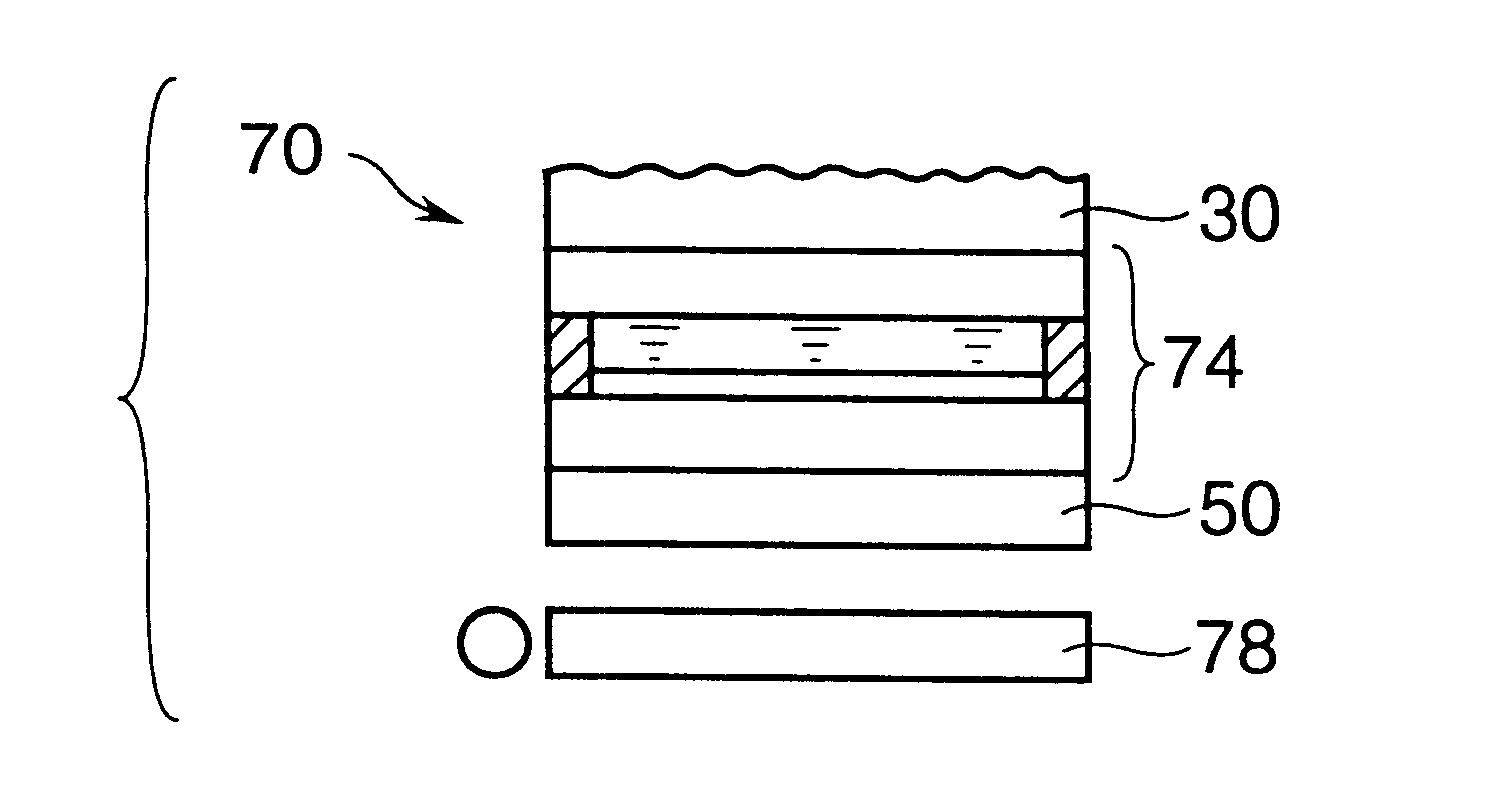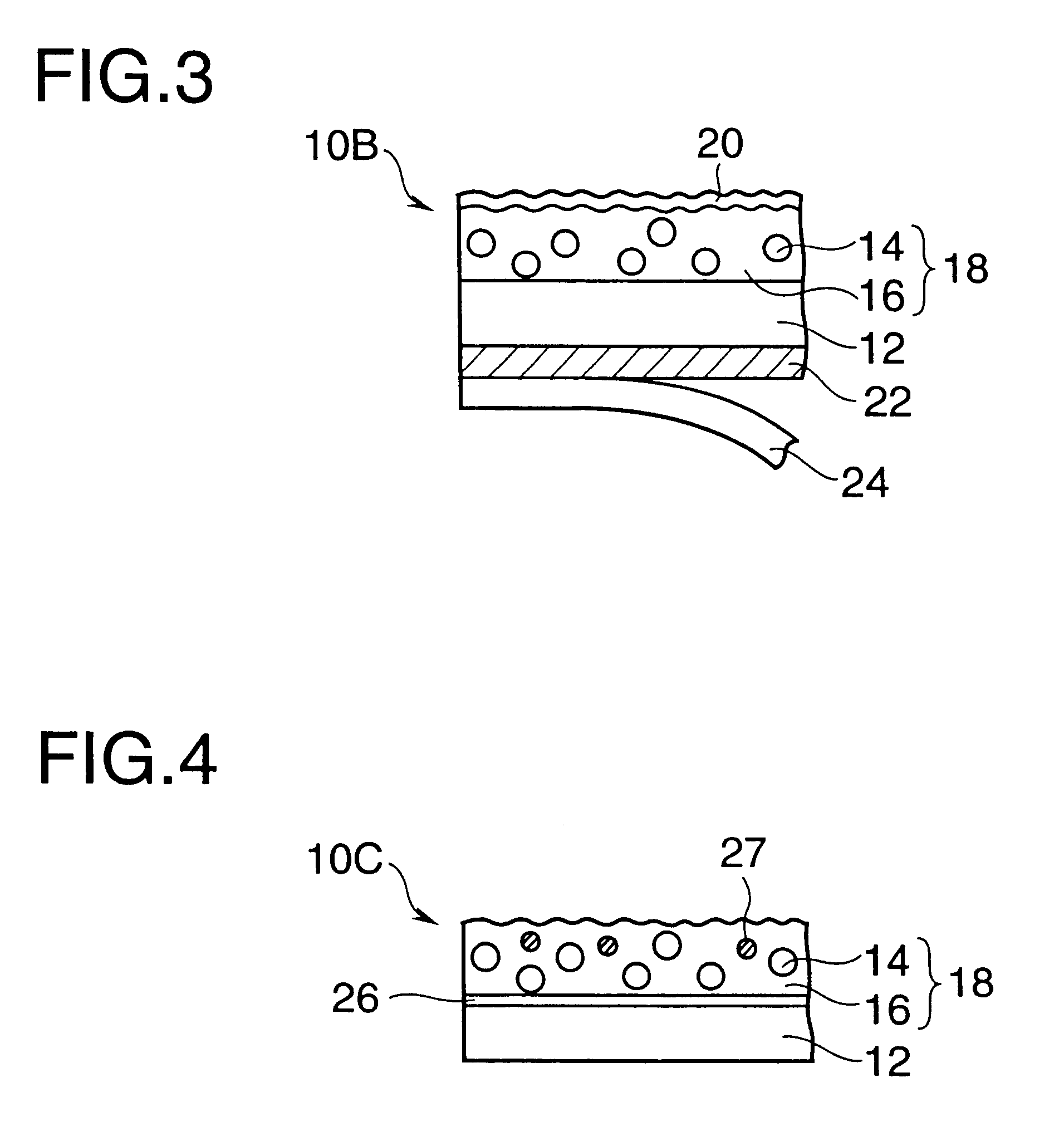Non-glare film, polarizing device and display device
a polarizing device and non-glare technology, applied in the field of nonglare film, can solve the problems of poor image sharpness, high haze value of the surface of a reflection-type liquid crystal display device, and poor image sharpness of the imag
- Summary
- Abstract
- Description
- Claims
- Application Information
AI Technical Summary
Benefits of technology
Problems solved by technology
Method used
Image
Examples
embodiment 1
forms a non-glare layer similar to that of embodiment 1, applies a saponification process to it and then forms an SiO2 film of 0.1 .mu.m in film thickness as a low refractive index layer on the non-glare layer by means of a deposition process, and further provides a contamination preventing layer on it. The condition for deposition of SiO2 is that the degree of vacuum is 4.times.10.sup.5 Torr, the voltage is 8 kV and the current is 20 to 40 mA.
And the contamination preventing layer is a contamination preventing layer of about 5 nm in film thickness formed by applying a KP-801M (product name; by Shin-Etsu Chemical Co., Ltd.) which is diluted to 0.07% with a fluorine-based solvent PF5080 (product name; by 3M) to a sample and dries it at 80.degree. C. for one minute.
Each of examples 4 to 6 omits a low refractive index layer from each of embodiments 1 to 3, and therefore has no saponification process.
Next, example 7 is described.
Although not described in Table 1, a manufacturing method ...
PUM
| Property | Measurement | Unit |
|---|---|---|
| surface roughness Ra | aaaaa | aaaaa |
| refractive index | aaaaa | aaaaa |
| particle diameter | aaaaa | aaaaa |
Abstract
Description
Claims
Application Information
 Login to View More
Login to View More - R&D
- Intellectual Property
- Life Sciences
- Materials
- Tech Scout
- Unparalleled Data Quality
- Higher Quality Content
- 60% Fewer Hallucinations
Browse by: Latest US Patents, China's latest patents, Technical Efficacy Thesaurus, Application Domain, Technology Topic, Popular Technical Reports.
© 2025 PatSnap. All rights reserved.Legal|Privacy policy|Modern Slavery Act Transparency Statement|Sitemap|About US| Contact US: help@patsnap.com



